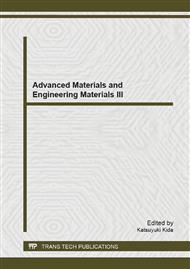p.201
p.205
p.209
p.213
p.221
p.228
p.235
p.241
p.245
Experimental Study on Fire Characteristics of Building External Thermal Insulation Composite Systems Based on Polystyrene Foam
Abstract:
The objective was to gain the fire characteristics of the External Thermal Insulation Composite Systems (ETICS), which is widely used in China. A series of large-scale fire experiments were conducted under ISO 9705 room test on the ETICS with its core of polystyrene (PS) foam and its outer layer of plastering mortar. The various thicknesses (3 mm and 5 mm) of the outer layer were considered. Under the fire source impact and the melting behavior of PS foam, the flame evolution of ETICS could form a flowing fire and cavity fire, which was obviously different from that of thermal insulation panel itself, but similar to the sandwich panels. A detailed analysis was performed to quantify some major parameters, such as the heat release rate (HRR) and temperature distribution. The results indicated that the peak of HRR could be reduced 11.34% and put off 94 seconds by the thicker outer layer (5 mm); similarly the peak of HRR could be reduced 22% and put off 190 seconds by the flame-retardant treated.
Info:
Periodical:
Pages:
221-227
Citation:
Online since:
February 2014
Authors:
Keywords:
Price:
Сopyright:
© 2014 Trans Tech Publications Ltd. All Rights Reserved
Share:
Citation:


